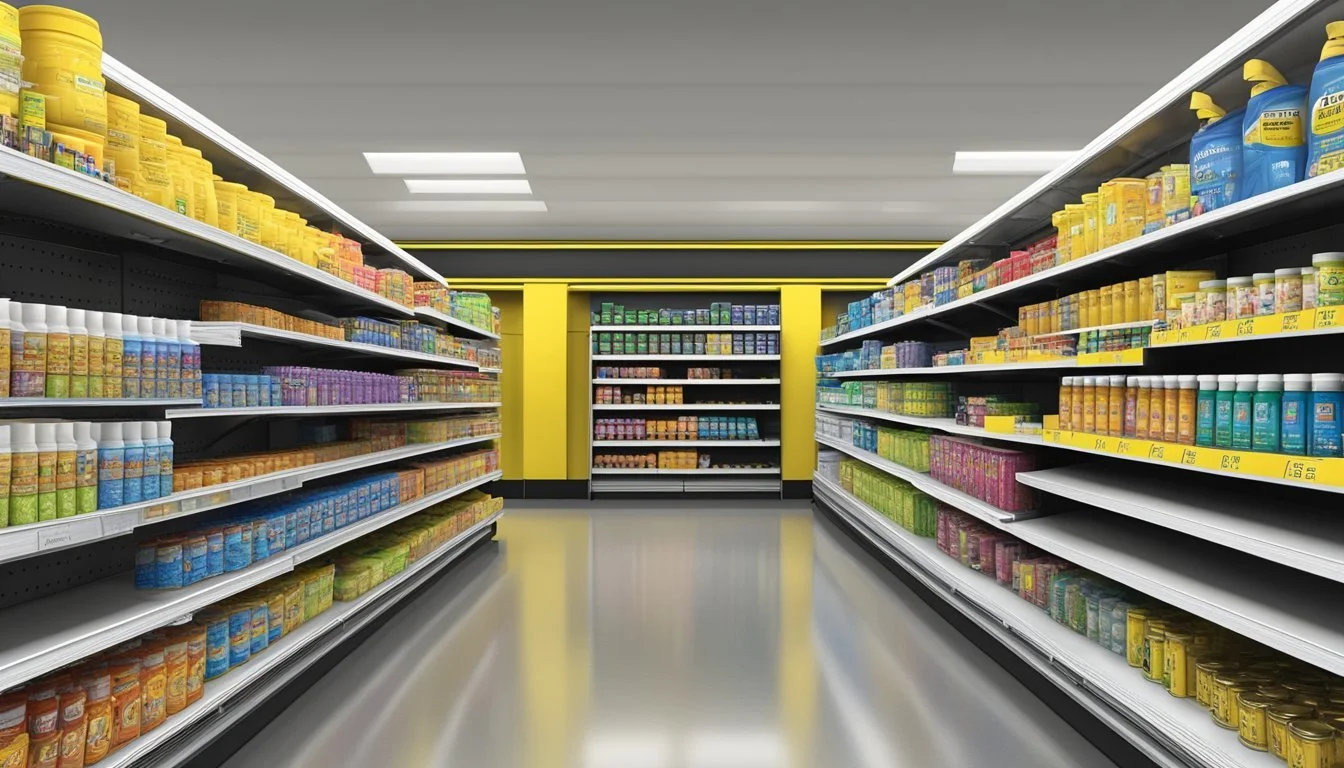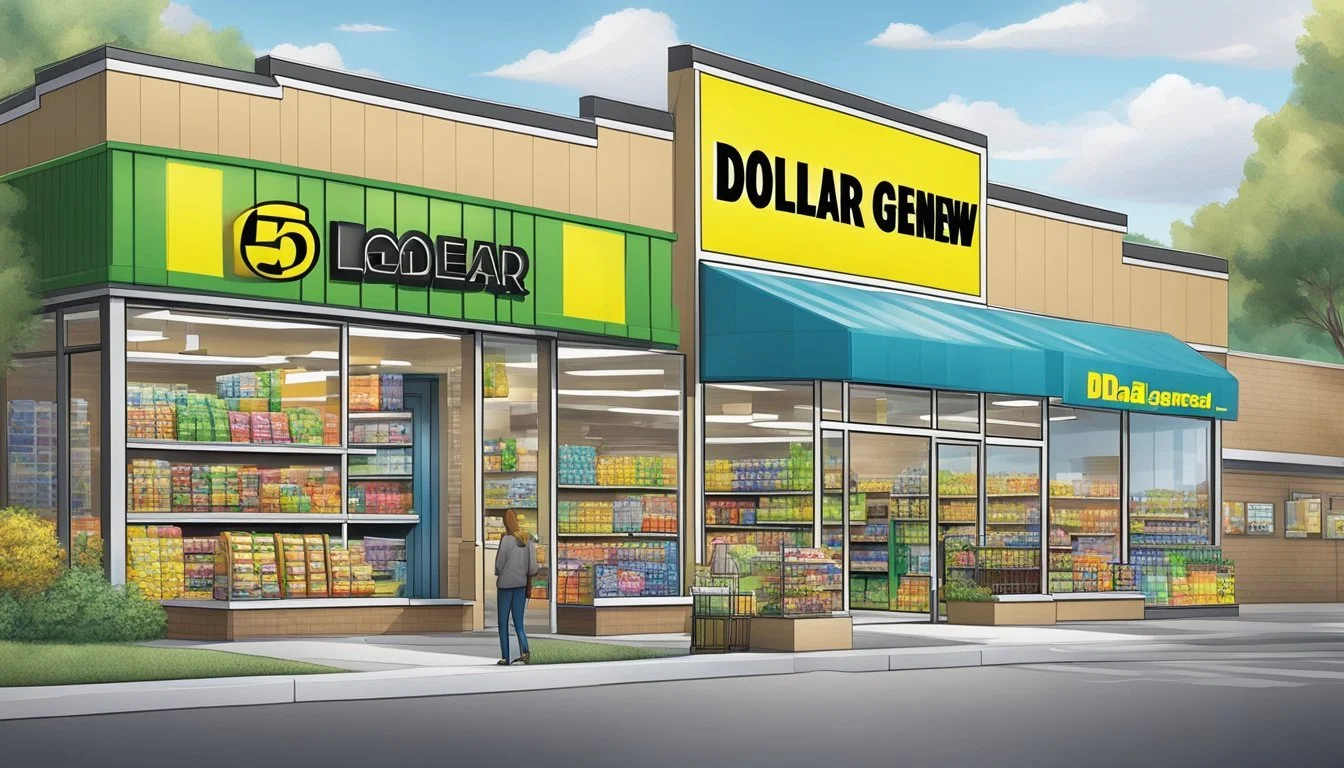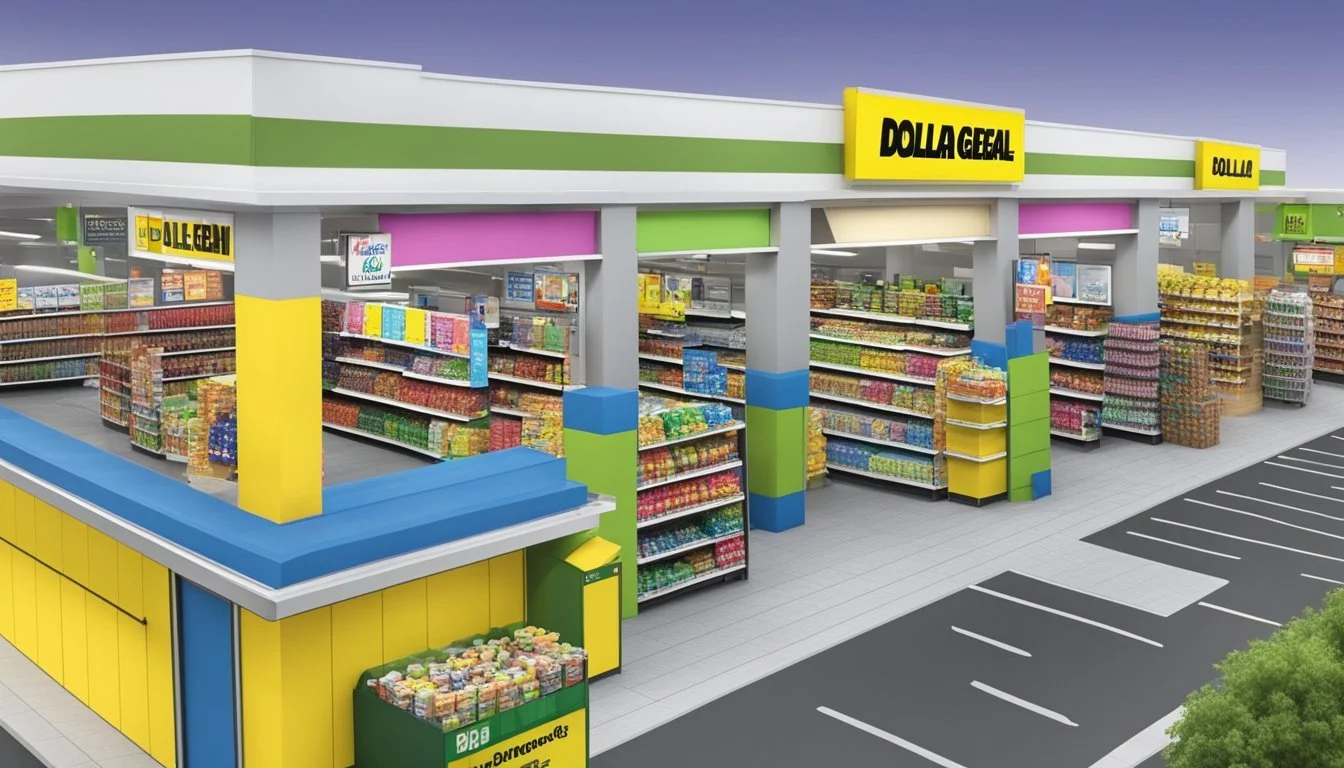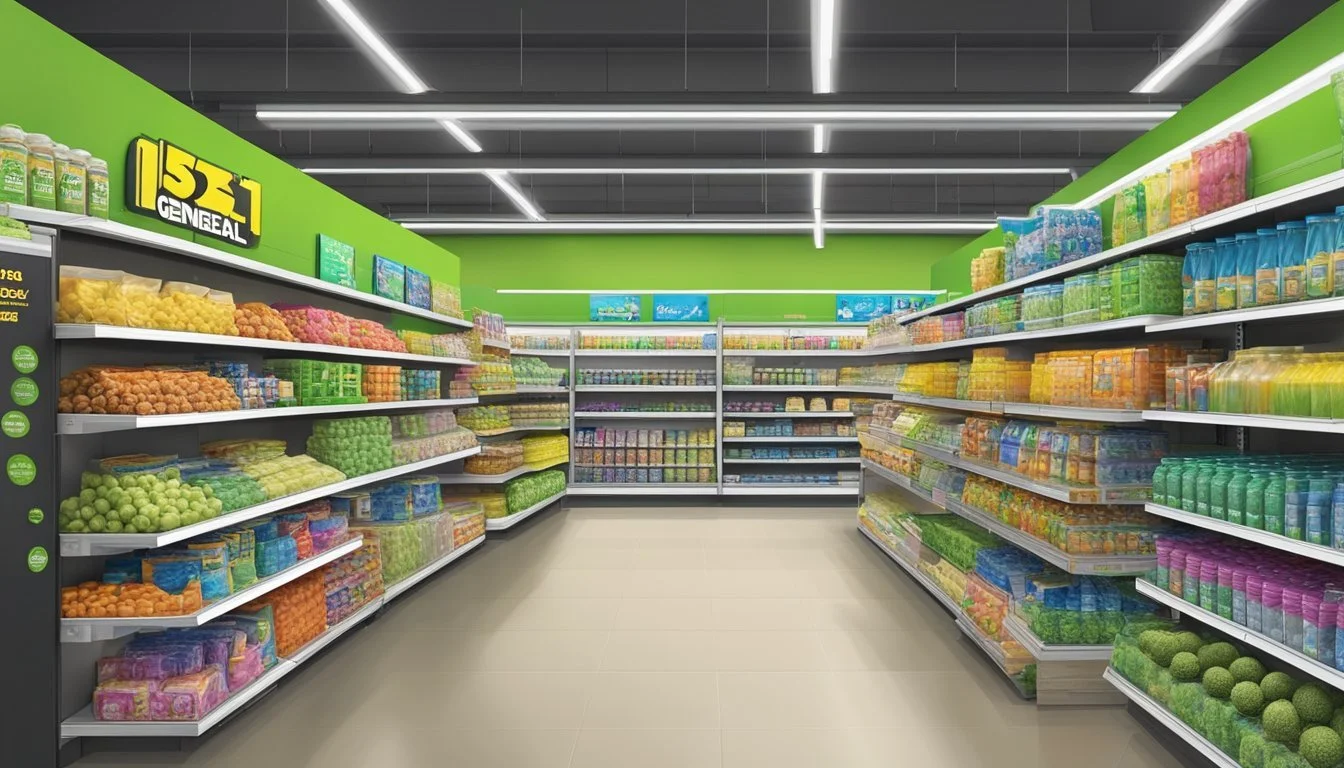Is Dollar General Cheaper Than Five Below?
A Price Comparison Analysis
Dollar General and Five Below have become popular destinations for budget-conscious shoppers seeking affordable goods. While both offer low prices, they cater to different market segments and product ranges. Dollar General generally has lower prices on everyday essentials and household items compared to Five Below.
Five Below focuses on trendy items and gadgets priced at $5 or less, targeting a younger demographic. Their stores feature a fun, vibrant atmosphere with products like electronics accessories, room decor, and seasonal items. Dollar General, on the other hand, stocks a wider variety of practical goods including groceries, cleaning supplies, and personal care products.
When comparing costs, it's important to consider the specific items needed. Dollar General often beats Five Below on staple goods and name-brand products. However, Five Below may offer better deals on certain categories like party supplies, toys, and tech accessories. Shoppers looking to maximize savings should compare prices on their most frequently purchased items at both stores.
Understanding Dollar Stores
Dollar stores have become a staple in American retail, offering a wide range of products at affordable prices. These retailers cater to budget-conscious consumers seeking everyday essentials and occasional bargains.
History and Evolution of Dollar Stores
Dollar stores emerged in the 1950s, with Dollar General pioneering the concept in 1955. The idea quickly gained traction, leading to the establishment of chains like Family Dollar and Dollar Tree. Initially, these stores sold items for $1 or less, but many have since expanded their price points.
Dollar General grew rapidly, reaching 15,000 locations by 2019. Five Below, a newer entrant founded in 2002, targets a younger demographic with trendy items priced up to $5. The dollar store industry has seen significant growth, with sales increasing from $30.4 billion in 2010 to $45.3 billion in 2015.
Business Models of Dollar General and Five Below
Dollar General focuses on everyday essentials, offering a mix of name-brand and private-label products. Their private-label items often cost half the price of branded equivalents. For instance, a 32oz. Dial soap might cost $6.50, while a similar store-brand option would be much cheaper.
Five Below differs by selling trendier items primarily aimed at teens and pre-teens. Their inventory includes electronics, toys, and fashion accessories, with most items priced between $1 and $5. This strategy allows them to capture a different market segment than traditional dollar stores.
Both retailers continue to expand, with Dollar General planning to open 975 new stores in 2019 and Five Below steadily increasing its footprint. Their success demonstrates the ongoing demand for affordable retail options across various consumer demographics.
Price Comparison Insights
Dollar General and Five Below employ distinct pricing strategies for their product offerings. These approaches impact overall costs and value for consumers seeking discounted merchandise.
Comparative Analysis of Product Costs
Dollar General focuses on everyday essentials at competitive prices. Their inventory includes groceries, household items, and personal care products. Five Below targets a younger demographic with trendy items priced at $5 or less.
Dollar General's average transaction value is $24, while Five Below's is slightly higher at $25. This small difference reflects the varied product mix between the two retailers.
Five Below's $5 price cap allows for larger, higher-quality items in categories like electronics and room decor. Dollar General's wider price range accommodates more practical, frequently purchased goods.
Case Studies on Prices
A price comparison of common items reveals nuanced differences:
School supplies: Five Below offers larger quantities (e.g., 24-pack pencils for $3) versus Dollar General's smaller packs at lower price points.
Snacks: Dollar General typically has lower prices on name-brand chips and candy.
Seasonal items: Five Below excels in affordable holiday decor and gifts, often undercutting Dollar General's prices.
These examples highlight each store's strengths in different product categories, making direct comparisons challenging.
Cost Drivers in Retail Pricing
Several factors influence pricing at both retailers:
Sourcing: Dollar General's focus on name brands can increase costs, while Five Below's emphasis on private labels allows for lower prices.
Volume: Dollar General's larger store network enables bulk purchasing discounts.
Store size: Five Below's larger format stores accommodate a wider product range, potentially offsetting some costs.
Target market: Dollar General caters to budget-conscious shoppers in rural areas, while Five Below targets urban and suburban youth.
These elements combine to create distinct pricing models, with each retailer optimizing costs based on their specific business strategies and customer base.
Product Assortment Overview
Dollar General and Five Below offer distinct product selections, catering to different consumer needs and price points. Their inventories reflect unique strategies in categories, variety, quality, and brand representation.
Categories and Variety of Products
Dollar General provides a wide array of everyday essentials. Its shelves stock food items, including pasta and canned goods. The store also carries household cleaners, personal care products, and basic clothing. School supplies, small electronics, and some toys are available too.
Five Below focuses on trendy items appealing to younger shoppers. Its inventory includes toys, games, and tech accessories. The store offers a selection of candy and snacks. Seasonal items, room decor, and fashion accessories feature prominently. Five Below also stocks beauty products, books, and craft supplies.
Quality and Brand Differentiation
Dollar General carries a mix of national brands and private-label products. Its house brands offer lower-priced alternatives to name-brand items. Quality varies, with some products comparable to major retailers and others more basic.
Five Below emphasizes novelty and trendiness over established brands. Many items are unbranded or from lesser-known manufacturers. The store curates products to fit its $5-and-below price point. Quality can be hit-or-miss, with some items offering good value and others being more disposable in nature.
Consumer Shopping Experience
Dollar General and Five Below offer distinct shopping experiences, catering to different customer needs and preferences. Their store layouts, product offerings, and customer service approaches shape how consumers interact with each brand.
Store Layout and Accessibility
Dollar General stores typically feature a no-frills layout with clearly labeled aisles and basic shelving. Products are organized by category, making it easy for shoppers to find everyday essentials quickly. Most locations are situated in rural areas or small towns, providing convenient access for residents in these communities.
Five Below stores, in contrast, have a more vibrant and youthful atmosphere. The layout is designed to encourage browsing, with themed sections and eye-catching displays. These stores are often found in suburban shopping centers or malls, attracting a younger demographic and families looking for affordable trendy items.
Customer Service and Satisfaction
Dollar General prioritizes efficiency in its customer service approach. Stores typically have minimal staff, focusing on restocking and quick checkout processes. This model allows for lower prices but may result in longer wait times during busy periods.
Five Below emphasizes a more engaging shopping experience. Staff members are often more visible on the sales floor, ready to assist customers. The stores frequently update their merchandise, introducing new and seasonal items to keep the shopping experience fresh and exciting for repeat visitors.
Both retailers strive to maintain customer satisfaction through their distinct approaches, balancing price, convenience, and product selection to meet their target markets' expectations.
Marketing and Sales Strategies
Dollar General and Five Below employ distinct marketing and sales approaches to attract customers and drive revenue growth. Both retailers focus on offering low prices, but their specific tactics differ in key areas.
Pricing Strategies and Discounts
Dollar General maintains consistently low prices across its product range. The retailer stocks a mix of national brands and private-label items, often in smaller package sizes to keep prices down. Dollar General's strategy involves frequent promotions and discounts to drive traffic and increase basket size.
Five Below takes a different approach, adhering to its $1-$5 price point concept. The company offers trendy items and seasonal merchandise within this range, creating a treasure hunt shopping experience. Five Below occasionally introduces slightly higher-priced items in dedicated sections, but maintains its core low-price strategy.
Both retailers use their pricing strategies to appeal to budget-conscious shoppers and drive customer loyalty.
Advertising and Brand Awareness
Dollar General invests in traditional and digital advertising to build brand awareness. The company utilizes weekly circulars, in-store signage, and targeted digital campaigns to promote deals and new products. Dollar General's widespread store presence also serves as a form of passive advertising in many communities.
Five Below focuses on creating a fun, vibrant in-store experience to attract younger shoppers. The retailer uses social media marketing and influencer partnerships to engage its target demographic. Five Below's colorful store designs and product displays act as powerful marketing tools, encouraging impulse purchases and repeat visits.
Both companies leverage their brand identities to differentiate themselves in the competitive discount retail market.
Comparable Sales and Revenue Growth
Dollar General has demonstrated strong comparable sales growth in recent years. The company's focus on essential items and value-priced merchandise has resonated with consumers, particularly during economic downturns. Dollar General's expansion into fresh produce and health-related products has also contributed to sales growth.
Five Below has experienced rapid revenue growth, driven by new store openings and increasing brand recognition. The retailer's comparable sales have been more volatile, influenced by trends in discretionary spending and product popularity among its younger customer base.
Both companies continue to expand their store networks, with Dollar General focusing on rural and underserved markets, while Five Below targets suburban areas and shopping centers.
Comparison Between Dollar General and Five Below
Dollar General and Five Below are two prominent discount retailers in the United States with distinct business models and target markets. They differ in their store footprints, customer demographics, and product offerings.
Geographical Footprint and Store Count
Dollar General boasts a larger geographical presence with over 18,000 stores across 47 states. Its focus is on rural and suburban areas, often serving communities with limited retail options. Five Below, in contrast, operates around 1,200 stores in 40 states. It targets more urban and suburban locations, including shopping centers and malls.
Dollar General's expansion strategy emphasizes accessibility, with stores typically within a 5-mile radius of their customers. Five Below concentrates on high-traffic areas near other popular retailers. In Queens, New York, for example, Five Below has multiple locations in busy shopping districts, while Dollar General maintains a presence in less densely populated neighborhoods.
Demographics and Target Markets
Dollar General caters to budget-conscious shoppers across various age groups and income levels. Its core customer base includes lower to middle-income families and individuals seeking everyday essentials at affordable prices. The retailer's strategy focuses on providing convenience and value to underserved communities.
Five Below targets a younger demographic, primarily teens and tweens, as well as budget-minded adults. Its stores attract customers looking for trendy, fun, and affordable products. The retailer's bright, colorful store designs and ever-changing merchandise appeal to impulse shoppers and those seeking novelty items.
Product Range and Price Points
Dollar General offers a wide range of everyday essentials, including groceries, household items, personal care products, and basic apparel. Most items are priced under $10, with many products available for $1 or less. The retailer also carries some national brands alongside its private label offerings.
Five Below, true to its name, prices most items at $5 or less. Its product mix includes:
Tech accessories
Toys and games
Room décor
Beauty products
Seasonal items
Five Below focuses on trendy, impulse-buy merchandise that changes frequently. Unlike Dollar General, it does not carry groceries or household essentials. Five Below's unique product assortment sets it apart from traditional dollar stores and even large retailers like Walmart.
Economic and Market Factors
Economic conditions and competitive dynamics shape pricing strategies at Dollar General and Five Below. Inflation and market positioning influence how these retailers set prices and attract budget-conscious shoppers.
Impact of Inflation on Pricing
Inflation has driven up costs for retailers and consumers alike. Dollar General has adjusted by raising prices on some items above $1, while maintaining a focus on affordability. Five Below has expanded its "Five Beyond" sections with higher-priced merchandise to offset rising costs. Both chains aim to remain attractive options for price-sensitive shoppers.
Consumer spending habits have shifted, with more Americans seeking discounts. This trend benefits dollar stores as shoppers look to stretch their budgets. Dollar General's wider product selection, including groceries, positions it well to serve as a one-stop shop for essential items.
Competitive Landscape Analysis
Dollar General and Five Below face competition from other discount chains and major retailers. Walmart and Amazon have expanded their low-price offerings to capture budget-conscious consumers. Dollar General's rural store footprint gives it an edge in areas underserved by larger chains.
Five Below targets a younger demographic with its focus on trendy items and electronics. This niche helps differentiate it from Dollar General's more practical assortment. Both chains must continually innovate to stay relevant in a crowded retail landscape.
Online sales present both opportunities and challenges. Dollar General has invested in e-commerce, while Five Below's in-store experience remains central to its appeal. Adapting to changing shopping habits will be crucial for both retailers' long-term success in the U.S. market.
Sustainability and Ethical Practices
Dollar General and Five Below have implemented sustainability initiatives and ethical practices to address environmental concerns and responsible sourcing. These efforts aim to reduce their environmental impact and ensure ethical standards throughout their supply chains.
Environmental Considerations
Dollar General has established a Sustainability Committee comprising executive leadership team members and the Vice President of Corporate Social Responsibility. This committee meets quarterly to oversee environmental initiatives. The company commits to complying with federal, state, and local environmental laws.
Five Below focuses on reducing waste and energy consumption in its operations. The company has implemented recycling programs and energy-efficient lighting in stores. Both retailers have taken steps to minimize packaging waste and encourage the use of reusable bags.
Commitment to Ethical Sourcing
Dollar General emphasizes ethical sourcing practices in its supply chain. The company works with suppliers to ensure fair labor practices and safe working conditions. It has implemented a vendor code of conduct that outlines expectations for ethical business practices.
Five Below also prioritizes responsible sourcing. The company partners with suppliers who adhere to ethical labor standards and environmental regulations. Both retailers conduct audits of their suppliers to verify compliance with their ethical sourcing policies.
Advantages of Shopping at Discount Stores
Discount stores like Dollar General and Five Below offer significant savings for shoppers. Their low prices allow customers to stretch their budgets further and get more for their money.
These retailers provide a wide variety of everyday essentials and household goods at discounted rates. Shoppers can find cleaning supplies, personal care items, snacks, and more at prices well below traditional retail.
Convenience is another key benefit. Discount stores often have numerous locations in both urban and rural areas, making them easily accessible to many customers. Their smaller store formats also allow for quick trips.
Many discount retailers offer surprising deals on name-brand products alongside their private label offerings. This gives shoppers options at different price points.
Seasonal items and holiday decor can be found at steep discounts compared to other stores. Savvy shoppers take advantage of these deals to decorate and celebrate for less.
Some key advantages include:
Lower prices on everyday items
Convenient locations
Mix of name-brand and private label goods
Seasonal deals and discounts
By focusing on value and low costs, discount stores provide an affordable shopping option for budget-conscious consumers.








